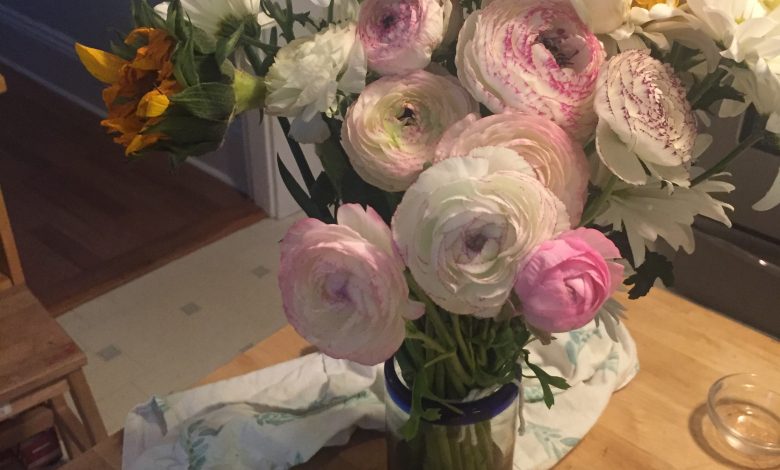
Whether you’re stuck at home with the kids or not, this is a pretty neat experiment to try out–and a great opportunity to have your kids experience the scientific process. Science is not just about knowing how electricity works or what happens when you combine vinegar and baking soda–it’s a process by which we ask questions and figure out how to answer them. For example, I always say that babies are the best scientists. When they want to know what something tastes like, they put it in their mouth! And they like to conduct tests on what happens when they drop something off the high chair. So when I teach science to my children, I start with them just asking questions (and later stating their hypothesis).
I don’t know if you’ve ever seen the carnation food dye experiment, but if you haven’t here it is: you take some white carnations, put them in different vases, and add water that has been colored with food dye. Over a day or so, the carnations will suck up the liquid, and you should see a color change in the petals. Pretty cool! If you want to start with that, you can find more instructions here.
Here’s my variation of that experiment. I know how the carnation experiment works, but does it work for all flowers? Also, how will the dye affect colored flowers? Ask your own questions and make your own predictions and see what happens!
To read the rest of this post, check out the rest at Grounded Parents!





Love it, and it made me think of a similar experiment, that may or may not give interesting results. A common spring flower in Norway is Anemone Hepatica (which has a bunch of English names as well) which most often has blue or purple flowers, but soil conditions can turn them pinkish or white. Another way to change the color is to use them to antagonize wood ants until they spray formic acid on the flower. If they started out blue or purple they will dramatically change to pink wherever the acid hits.
Perhaps, and I’m just hypothesizing wildly here, household acids and bases might change petal colors as well, given a little time.
Oh that is a really cool followup! I wonder if that would also work on hydrangeas (since they also have pH-dependent color changes).
One interesting development: I noticed that one of the flowers with a little damage to the petals had a lot of blue around the damaged area, which could lead to a good discussion about what exactly is going on with the flower.
I THINK that some florists have sold flowers with a two-tone die. Splitting the stem and putting the ends in different colored waters. One could experiment with the axis of the split, the possible limit of how many splits could work, the possibility of superimposing a new color onto (into) a previously stained flower etc. etc.
That’s an interesting idea! I might try it with tulips. For my experiment so far, the ranunculus has been the one that’s sucked up the most color, and I’m thinking it’s because of how the stem is a little less woody than the other flowers.